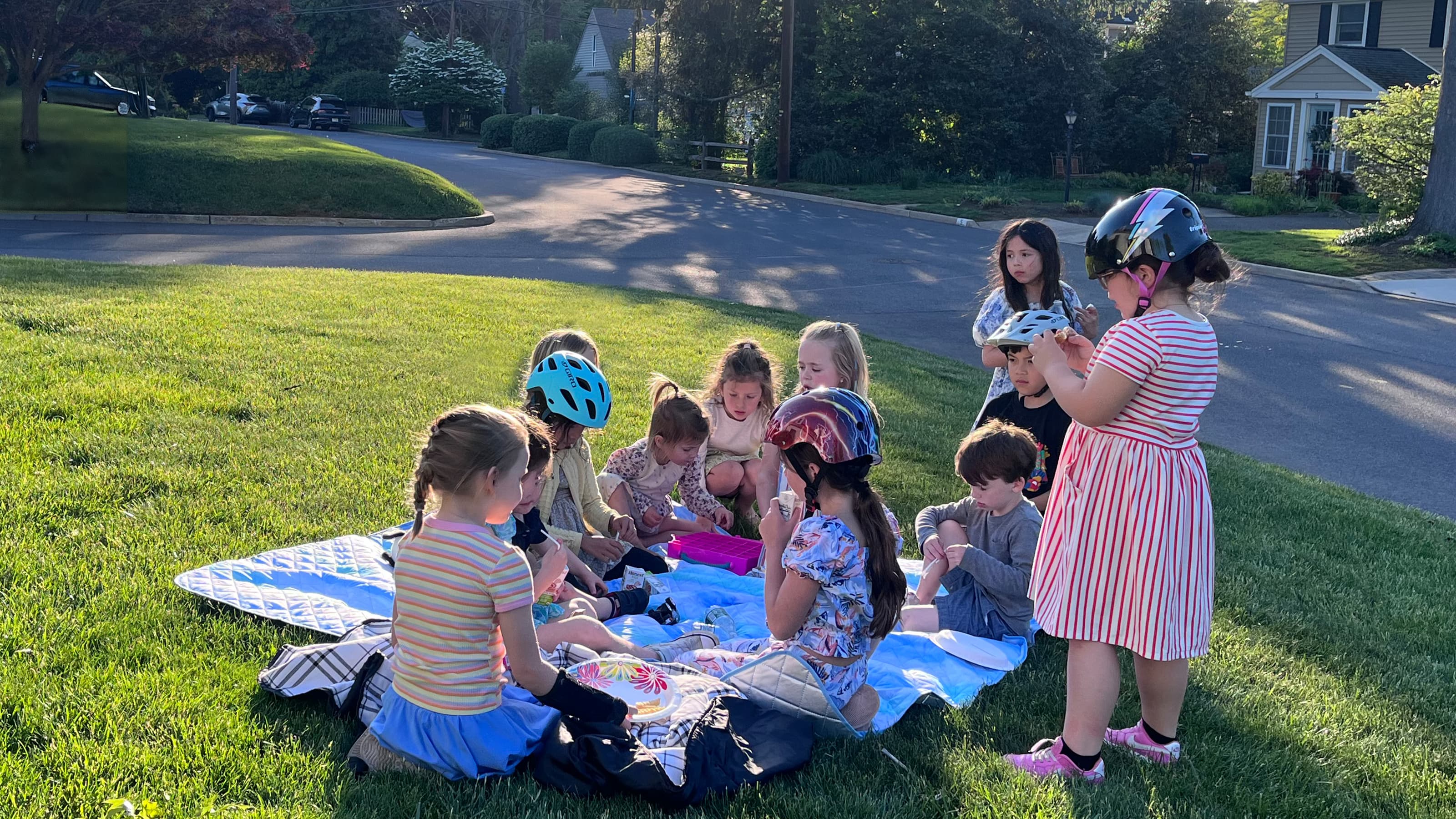Life Imitates Art in the Whimsical, Wes Anderson-Inspired World of Wally Koval, BS ’07
On Instagram and in a pair of books, he’s shining a light on quirky places that reflect the director’s aesthetic — and showing that they all have stories to tell.

Along the border between Vermont and Quebec lies a building that straddles two worlds. It is, at once, both a library and an opera house — a cultural center created by Martha Haskell in the early 20th century to honor her late husband, Carlos. It is also, at once, both American and Canadian. A thick line of black tape down the center of the building separates the two sides, but as long as visitors leave through the same door they entered, they don’t need to carry a passport.
The Haskell Free Library and Opera House is just the sort of curious, colorful and quasi-symmetrical location that might conjure the films of Wes Anderson, the 21st century auteur of quirky and aesthetically idiosyncratic movies including “The Royal Tenenbaums,” “The Grand Budapest Hotel,” and “The Life Aquatic with Steve Zissou.” And it’s just the sort of place that Saint Joseph’s University alumnus Wally Koval, BS ’07, and his wife, Amanda, have been celebrating for years on their wildly popular Instagram account, Accidentally Wes Anderson.
In Their Words
Wally Koval, BS '07
Accidentally Wes Anderson Co-Founder
What began as the Kovals’ travel bucket list back in 2017 — sights and scenes from around the world that bore some resemblance to the beloved director’s work — soon developed a devoted following. Today, the account has nearly 2 million followers and has spawned a pair of books, a puzzle, postcard set and a series of immersive exhibitions in Melbourne, Seoul, London and beyond. At every step, Koval and his Community (a capitalized, proper noun in his book) highlight the stories that reveal the human element of the peculiar, pastel places that remind people of Anderson’s movies.
“We’re taking the aesthetic from a very measured, perfect environment and turning it to the real world that’s imperfect and not measured in any way, shape or form. It has cracks and broken paint and uneven things, and sometimes it’s not happy,” Koval says. “But looking at the world through this lens, with a slightly different perspective, unlocks a new potential for things around us that we don’t typically give much attention to.”
Koval couldn’t have anticipated he’d end up here when he graduated with a bachelor’s in food marketing. (Notably, Instagram didn’t exist back then, and Anderson had only released four films.) But his time at St. Joe’s taught him to think outside the box and encouraged him to find his own path, he says. Like Anderson, he learned “to find ways of getting from Point A to Point B by zigzagging a little bit, instead of taking a straight line.”
Perhaps as important, he studied abroad in Sydney during his junior year, an experience that instilled in him a desire to explore more of the world. In the pages of his latest book, “Accidentally Wes Anderson Adventures,” published in October, he and his readers do just that, visiting 200 destinations that span 38 countries on every continent, thanks to the work of 160 photographers. (The selections are culled from thousands of submissions he and Amanda receive each month on their website.) Each entry features a whimsical bit of history, often about the people whose lives have intersected with the places pictured — or, in the case of one Australian locale, the platypuses who outnumber those people.
Koval considers AWA (his preferred shorthand for anything that is Accidentally Wes Anderson) to be “the intersection of distinctive design and an interesting narrative.” Each entry in the book is its own “moment of delight,” he says. He and Amanda had their own such moment when they found out Anderson himself not only approved of their work, but would write a foreword, which Koval says was “beyond a stamp of approval.”
Although he and Amanda have had chances to travel around the world to Buenos Aires and Tokyo to see pieces of the AWA archives in person — and just returned from a three-week book tour that traversed 11 states — Koval is just as conscious of the places close to home that spark the same curiosity. Speaking from his house in Wilmington, Delaware, he remarks on a neighbor’s home, built in 1902, that holds “a thousand different stories.” His favorite comments from readers evoke something similar, messages that suggest someone never knew the history of a building they passed every day until they considered it through the perspective of Accidentally Wes Anderson.
“You do not need to travel far to find AWA,” Koval says. “It’s around every corner if you allow yourself to see it. You can go to any Main Street, any local library, or talk to your local octogenarian and you’ll find these stories and these interesting places that you didn’t know. You just have to be open to seeing them.”










